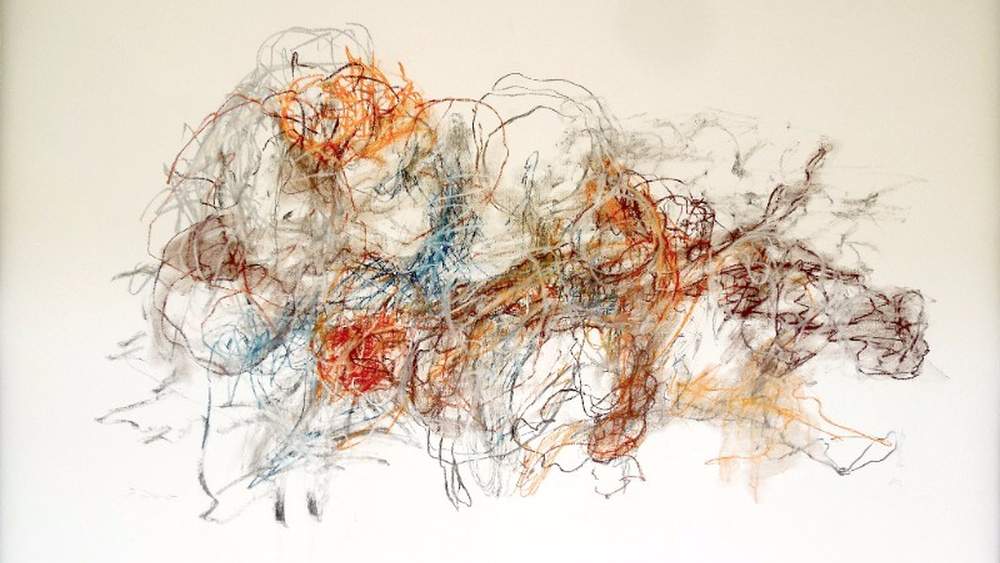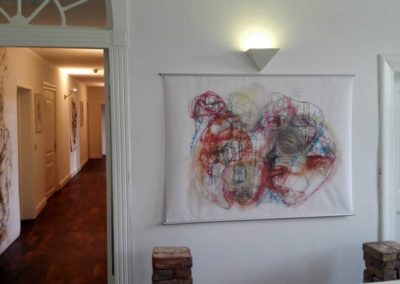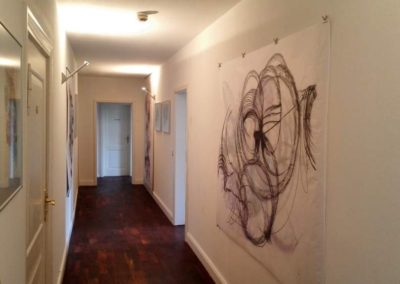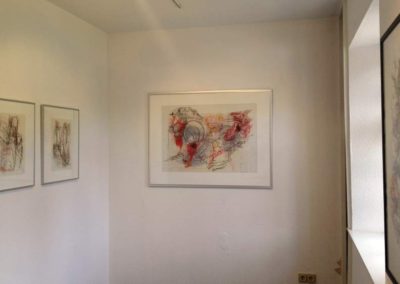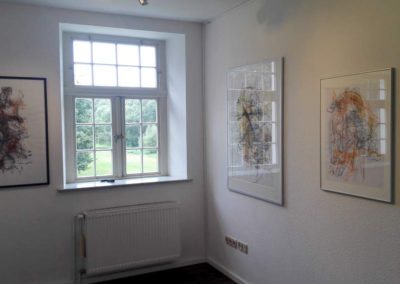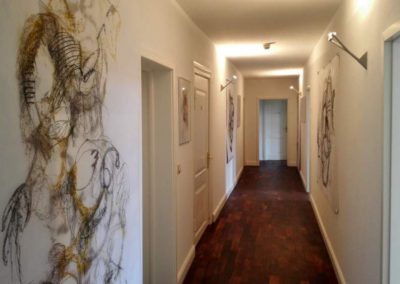BRIGITTE DENECKE | Von Innen nach Außen - From the Inside Out
Brigitte Denecke (*1947, Claußnitz; lebt und arbeitet in Eichwalde) – Ihre Zeichnungen entwickeln sich im wahrsten Sinne des Wortes „Von Innen nach Außen“. Es gibt keine konkrete Inspiration, auch keine konkrete Abbildung oder Darstellung. Trotzdem oder gerade deswegen sind ihre teils großformatigen Arbeiten umso wahrhaftiger, weil sie etwas ausdrücken, das von ganz tief Innen kommt – ohne nachträgliche und konzeptuelle Filter. Es sind automatische Zeichnungen, die – ganz wie bei André Masson, der diese Technik als einer der ersten entwickelte und sie aus der Literatur übernahm – das Unbewusste mit dem Bewussten verbinden. Das macht die Werke einerseits hochgradig individuell, andererseits universell zugänglich. Sie lösen beim Betrachter direkt Gefühle aus, ähnlich wie Musik beim Hörer direkt Gefühle auslösen kann. Was daran liegen mag, dass die Künstlerin sich bei manchen der Werke von Musik (Alfred Schnittke, Henri Texier Trio) hat inspirieren lassen und zur Musik gearbeitet hat. Manche Bilder sind fein und filigran, andere fast grob und gewaltig, aber immer sind sie poetisch und sensibel. Das größte Kunststück ist jedoch, dass die Werke es schaffen, gleichzeitig virtuos und experimentell und spontan zu sein.
Wir haben einen Studiotisch installiert, damit sich die inspirierten Besucher selbst an dieser Art der Kunst versuchen können.
The drawings of Brigitte Denecke (*1947, Claußnitz; lives and works in Eichwalde, Germany) develop „From the Inside Out“ in the truest sense of the word. There is no definite inspiration, no concrete rendering or depiction.
Nonetheless or maybe for that very reason her partly large scale works are just the more real and authentic because they express something that comes from very deep inside – without post-processing and without contextual filters.
They are automatic drawings, which – just like with André Masson who pioneered this technique taking it from literature to visual arts – connect the subconscious with the conscious. This makes the works highly individual on one side but also universally accessible on the other. They trigger emotions in the viewer just like music can do in a listener. The reason for that might be that the artist was, for some of the works, inspired by music and worked to the music.
Some images are fine and filigrane, others almost rough and raw. In any case, they are always poetic and sensitive.
The most astounding tour de force, however, is that her art succeeds in being at the same time masterly, experimental and spontaneous.
We have installed a studio table so that inspired visitors may try their hand at this special technique.

